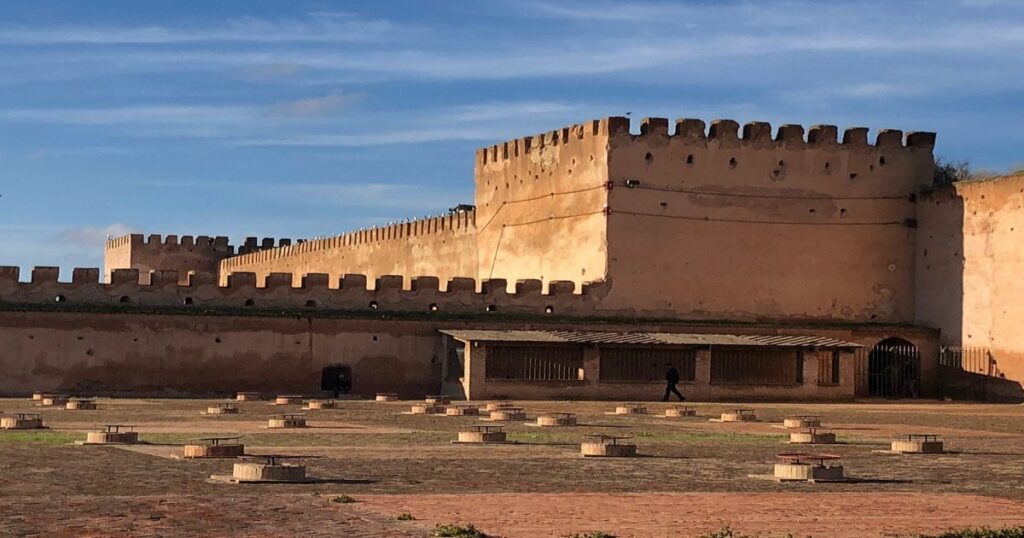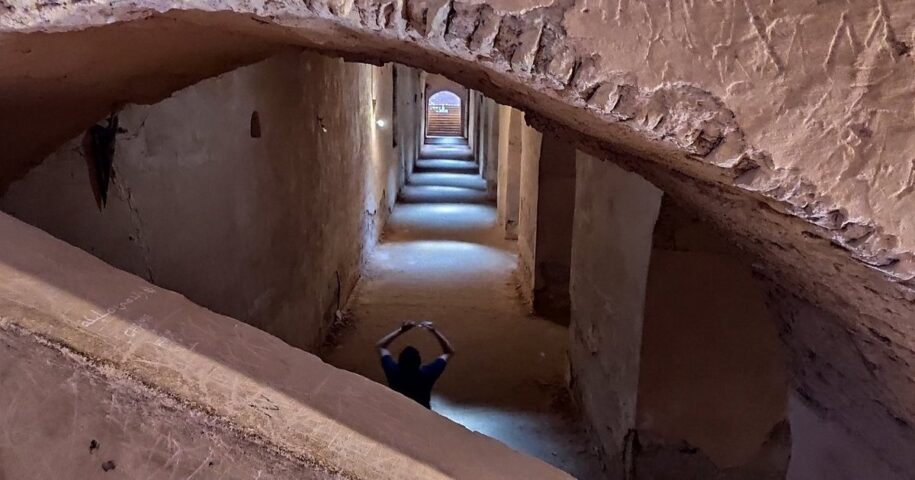During the reign of Sultan Moulay Ismael, the Qara prison in Meknes was established. A subterranean maze filled with stories, anecdotes, and even myths…
How many legends surround the story of Qara’s captivity? The location, in the center of Meknes, is a time machine. It was constructed during the time of Sultan Moulay Ismael (1672-1727), the first Alaouite dynasty to rule Morocco.
Inmates hold up.
The Qara prison is located in an enclosed field between the famed Place Lehdime and Place Lalla Aouda, to the right of the Moulay Ismael tomb. Its designations were difficult to understand: it was named “prison of Christians” at times, and “Sirdab” (“cellars” in French) at others. The name “Qara” was derived from a Portuguese prisoner who allegedly negotiated his release with the sultan in exchange for the construction of a jail capable of holding up to 40,000 people. It was completed.
At first inspection, only a few apertures indicate the mystery location’s underground presence. The heart tightens as soon as the first maze is completed, the eyes gradually adjust to the darkness, and a sense of heaviness crushes the stomach. Without the rare lights sprinkled around the jail, visitors can quickly become lost in the interminable passageways. Furthermore, inscriptions remain visible on the walls, like permanent footprints of the passage of lost souls in this desolate spot.
According to legend, the prison formerly spanned for hundreds of kilometers. According to tradition, the penitentiary’s walls extended as far as Taza, near Fez. They were built in cement to keep people from getting lost in the maze that is this location. However, another tale claims that a group of French scholars became lost there, forcing the closure of significant sections of the jail.
Also check out: Volubilis.
Strength and firmness.
The “Christian jail” was the official prison of Sultan Moulay Ismael, the imperial city’s constructor. She was a representation of his hardness and strength. It was placed just a few meters from the ambassadors’ pavilion, where negotiators gathered to rescue the Sultan’s foreign prisoners.
The France 2 channel even states in a program on Moulay Ismael that the fate of a dozen French inmates was bargained above them in the famed pavilion. To further comprehend these talks, consider the following historical event: European ships and captives were often taken at sea during the golden era of plundering. The French royal had sent missions to fetch the hostages back three times without success.
But what about the life of inmates on a daily basis?

According to Le Zamane magazine, the captives were thrown into the prison through a hole above the structure. Similarly, the meal was delivered to them through a little aperture. The detainees, who had been sentenced but not killed, did not survive. They were sleeping on the floor. The fortunate ones possessed goatskin to make their slumber more pleasant. Their days were spent working hard, lifting big loads, and destroying walls. Foreign captives played a key role in the building of the imperial city’s walls. Later, Qara’s jail was converted into a type of granary in order to withstand the tough conditions or crises that afflicted Meknes.
Opening hours.
If you want to go to Qara Prison, the hours are 9 am to 12 pm and again from 3 pm to 6 pm. The jail costs ten dirhams to enter, and the subterranean maze takes around 20 minutes to complete.


Leave a Reply